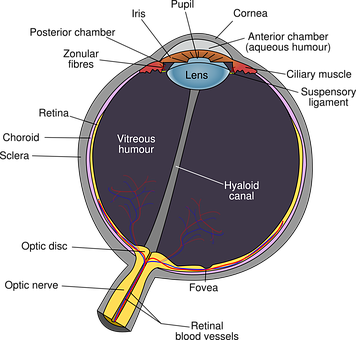The vitreal degeneration is a condition manifested by the presence of vitreous movable bodies following alterations affecting the vitreous bodya transparent gelatinous mass located between the crystalline lens and the retina.
The vitreous body, or simply vitreous, occupies more than two thirds of the entire volume of the eyeball and consists of 99% water and the remainder of collagen fibres and hyaluronic acid, mineral salts and vitamins such as ascorbic acid.
The vitreous performs a dual function:
-trophic: i.e. transport of certain nutrients to and from the retina;
-structural: its gelatinous and viscous mass ensures the adhesion of the retina to the bottom of the eye, a fundamental condition for correct vision.
Due to the natural physiological ageing process or as a result of certain diseases, the vitreous is subject to a change of 'state' that causes it to turn from gelatinous and viscous to fluid. In the long run, this fluidification can, in some cases, lead to the posterior vitreous detachment (posterior vitreous detachment, DVP) or the loss of adhesion of the vitreous to the retina, which causes vision problems.
The person who is affected by changes in the vitreous begins, therefore, to see some vitreous movable bodies floating in the field of vision (floaters). On a scientific level, they are defined as myodesopsias, also known as 'flying flies', as the patient perceives these vitreous movable bodies as annoying insects that disturb vision. These are thickenings of the vitreous that appear as moving objects before the eyes. The perception of these mobile bodies, which resemble flies, filaments, hair or spider webs and can vary in number and size, increases when looking at a very clear surface such as the sky, a white wall or any surface that increases visual contrast. As the vitreous loses its original consistency and liquefies, the detachment of the vitreous from the retina is perceived by the subject as a glow or sudden flashes of light (phosphenes).
Causes
The primary cause of the appearance of vitreous movable bodies is the ageing process that affects the vitreous, as well as other parts of the body.
Other common causes include:
-myopia
-eye trauma
-infectious and inflammatory states (uveitis, retinitis)
-cataract surgery.
Treatment and prevention
I floatersas well as the phosphenesare very annoying visual symptoms, especially during the initial phase. Later on, however, the brain tends to get used to their presence and begins to ignore them. Myodepsias, for the most part, are related to a normal ageing process of the vitreous but, sometimes, could be a symptom of other important pathologies such as vitreous haemorrhages. Especially when myodesopias appear together with phosphenes, it is advisable to immediately contact the ophthalmologist, who must make a proper assessment as quickly as possible.
To date, there is no real treatment for mydepsias. However, ahe following measures can improve and/or prevent symptoms:
-increasing the intake of liquids;
-follow a healthy, balanced diet, rich in vegetables and fruit;
-always wear the corrective lenses, if these are prescribed for myopia;
-take specific food supplements rich in antioxidants that help slow down the degenerative process of the vitreous body.
Sources:
Vitreous floaters: Etiology, diagnostics, and management. Milston R et al. Surv Ophthalmol. 61(2):211-27; 2016
Dr. Carmelo Chines
Direttore responsabile

